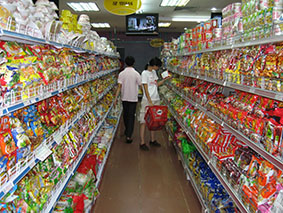Domestic demand in the Philippines looks strong enough to help make up for the lackluster performance of exports and fuel a rebound in economic growth to the 6% level for full-year 2015 from the first-quarter slack, said BMI Research, the think tank of the Fitch Group.
Despite the sharp slowdown in gross domestic product in the first quarter of this year to 5.2% from 6.6% in the fourth quarter of 2014, BMI Research believes there is no reason to revise its full-year growth forecast for 2015, Yahoo reported.
In an economic analysis, BMI Research said it maintained its 6% GDP growth forecast for the Philippines this year despite weak external demand.
BMI’s forecast indicates a mild deceleration from the 6.1% GDP expansion recorded for full-year 2014 but falls far short of the 7% to 8% growth goal of the government for 2015.
“In late 2014, we warned that the Philippine economy could face the risk of a poor export performance in 2015. This has played out in due course since the start of 2015, with exports contracting for five of the first six months of the year amid cooling regional demand,” it said.
Export growth took a plunge in May of 17.4% year-on-year, the biggest drop in three-and-a-half years, before falling a further 3.3% in June.
“While exports only account for around a third of nominal GDP, the Philippine economy will nevertheless be negatively impacted. Lackluster fiscal spending has also weighed on the economy,” it added.
Despite these growth headwinds, however, the think tank said it expects the Philippine economy to remain well supported by strong domestic demand.
Loans, Remittances Grow
BMI pointed out that loan growth in the country remains healthy, while remittance inflows continue to grow, suggesting that domestic demand conditions continue to look favorable.
The latest Bangko Sentral ng Pilipinas data on bank lending showed that annual growth in lending in June sustained a rise at 14.5%, while personal remittances from overseas Filipino workers rose 5.2% to $10.97 billion in the first five months of 2015.
“With the elections season fast approaching—May 2016—fiscal spending also looks set to pick up over the coming quarters, which should provide a measure of support for the economy,” it added.
Rates Steady
This pace of growth is enough to allow the central bank to keep its key policy rates steady for the rest of the year, the BMI Research study said.
“Our view is predicated on our expectations that the Philippine economy will not weaken considerably in the face of growing external headwinds in the near term,” it said.
BMI also stressed that upside pressure on prices look limited over the coming months, suggesting that any possibility of an interest rate hike is off the table for now.
The study added that despite the low inflation rate environment, monetary easing by the central bank is also unlikely.


